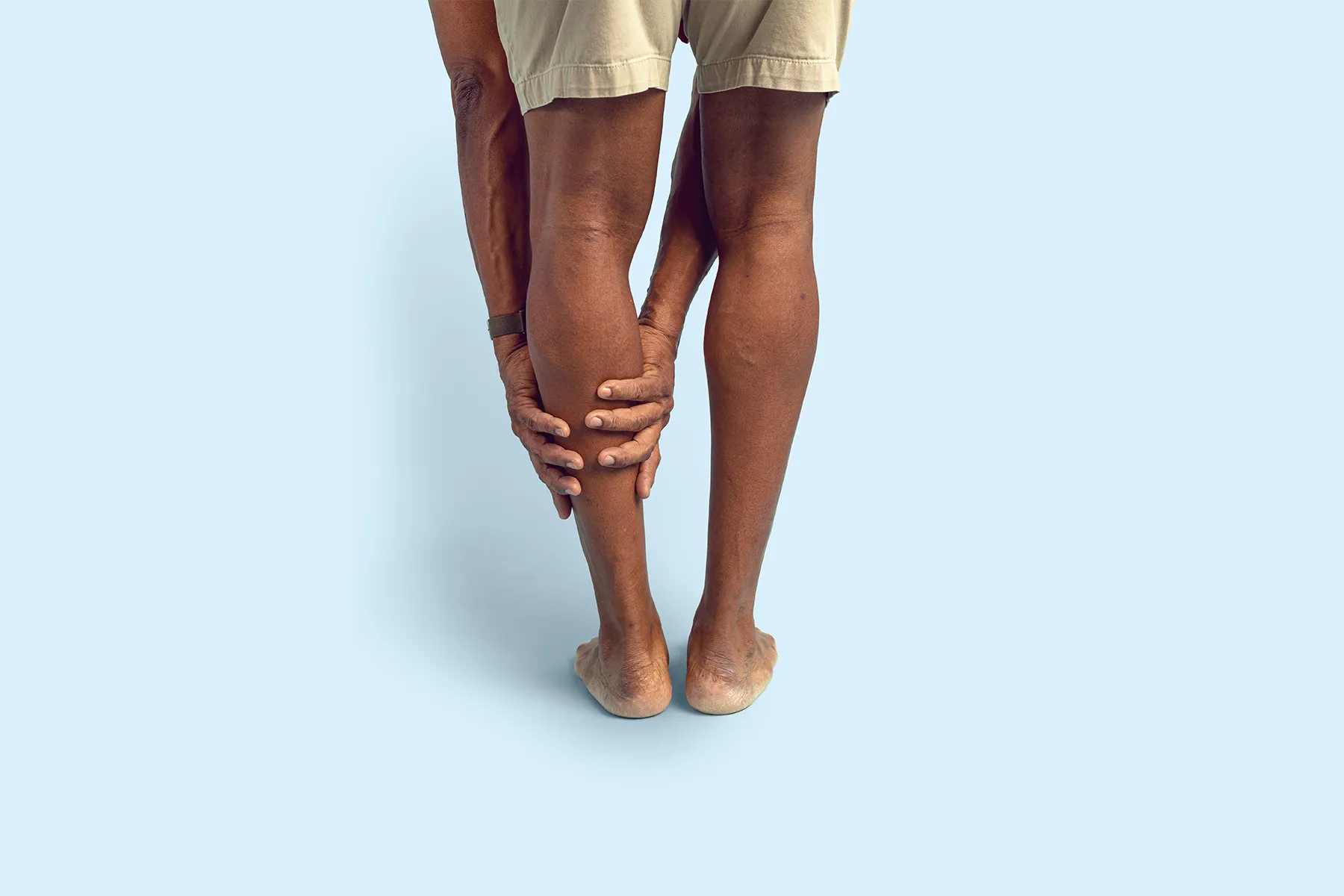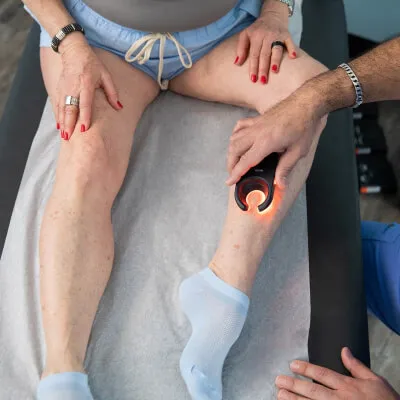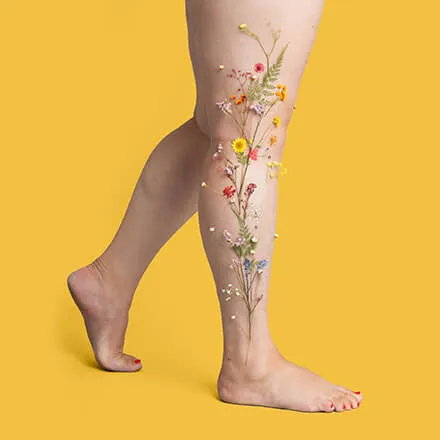Would you know how to recognize the signs of blood clots in your ankles, feet, and legs? These clots can develop silently and, if left untreated, pose dangerous risks to your health. To help you better identify and understand blood clots in your lower extremities, this guide will include the key signs and symptoms to look for (with images) to help you take action right away to prevent serious vein health complications.
Key Takeaways
- Sudden pain, warmth, and swelling in the lower extremities can indicate a blood clot.
- Diagnostic techniques like ultrasound can lead to a prompt diagnosis.
- Immediate treatment can prevent more serious complications.
What Are Blood Clots?
Blood clots, also known as venous clots or venous thromboembolism, are clumps of blood that form when blood thickens from a liquid to a semi-solid state. While clotting is a necessary process to stop bleeding, it can become problematic when clots form inside veins, obstructing the blood flow. In the lower extremities, these clots typically develop in the deep veins of the legs, feet, and ankles.
One complication of blood clots is a dangerous condition called Deep Vein Thrombosis (DVT). DVT develops as a result of a blood clot in one or more deep veins of the body (often the leg), leading to the complete obstruction of blood flow. A surprising 1 to 3 of every 1,000 people are affected by DVT.

Risk Factors
Blood clots can happen to anyone at any age, even professional athletes. These include:
- A history of cancer
- Recent surgery
- Smoking
- Pregnancy
- Birth control that contains estrogen
- Estrogen-based hormone replacement therapy
- Injury/Trauma, particularly when the vein is injured
- Long periods of sitting or immobility
- Being overweight
- A family history of blood clots
- Being over age 60
- Varicose veins
Common Locations and Presentation of Blood Clots
Blood clots often form in the deep veins of the legs and feet due to slower blood flow in these areas. The graphic below illustrates some of the visual and physical warning signs of a blog clot in commonly affected areas.

Diagnostic Tools and Imaging
To diagnose blood clots, doctors may use several available techniques:
- Duplex Ultrasonography: This uses sound waves to visualize blood flow for blood clot detection.
- Doppler Studies: This measures blood flow in arteries and veins.
- D-dimer Blood Test: gauges the presence of a substance in the blood associated with a blood clot.
- Contrast Venography: An x-ray with contrast (and injection of dye) that makes deep veins visible.
- Magnetic Resonance Imaging (MRI): Radio waves and a magnetic field that provide images of the body.

Blood Clot Prevention and Treatment
Blood clot treatment aims to prevent the clot from growing, reducing the risk of complications. It's important to remember that conservative treatments may help prevent a clot from forming or recurring; however, we always recommend seeking immediate medical attention if you start to notice any of the symptoms of a blood clot. Only your doctor can recommend the best treatment protocol for you.
Preventing Blood Clots
There are several things you can do to lower your risk of developing a blood clot, including:
- Regular exercise: Walking is the best exercise to maintain good leg circulation.
- Choosing vein-friendly foods and maintaining a healthy weight.
- Avoiding prolonged immobility.
Conservative Treatments
- Rest and elevation of the affected limb.
- Compression therapy using stockings.
Medical Treatments
- Anticoagulants (blood thinners) to prevent further clotting.
- Thrombolysis (clot-dissolving medications) for severe cases.
If you have signs of vein disease, such as varicose veins, you will want to include regular check-ups with a board-certified vein specialist as part of your overall wellness care plan.
Are you concerned about your risk of a blood clot in your lower extremities? Schedule a consultation with our vein specialists today for a free, comprehensive evaluation and a personalized treatment plan!
Conclusion
Early recognition and treatment of blood clots in the lower extremities can protect you from experiencing complications from vein disease or a life-threatening emergency. Proactive monitoring and regular check-ups with your primary care physician and vein doctor can support your overall vascular and long-term health.
Frequently Asked Questions
What are the early warning signs of blood clots in the ankles, feet, and legs?
Symptoms of a blood clot include sudden pain, swelling, redness, and warmth.
How is deep vein thrombosis diagnosed using imaging?
Diagnostic imaging techniques to confirm DVT include ultrasound and Doppler studies.
What treatments are available for clots in the lower extremities?
Treatments for blood clots in the legs, ankles and feet include anticoagulants and thrombolysis.
Can blood clots in the legs lead to serious complications like pulmonary embolism?
Yes. A pulmonary embolism is a life-threatening emergency caused when a blood clot that forms in the leg breaks off and travels to the heart and lungs, producing a blockage.
When should I seek emergency care for suspected blood clots?
If you experience any visual or physical symptoms of a blog clot, you should seek emergency medical treatment immediately.

Dr. Hugh Pabarue
Meet Dr. Hugh Pabarue M.D., a board-certified vein specialist with over 15 years of experience in Metro Detroit. Schedule an appointment with him in Macomb & St. Clair Shores today.
Meet Dr. Hugh Pabarue
Trusted insight from the nationally accredited, board-certified vein doctors at Metro Vein Centers.







